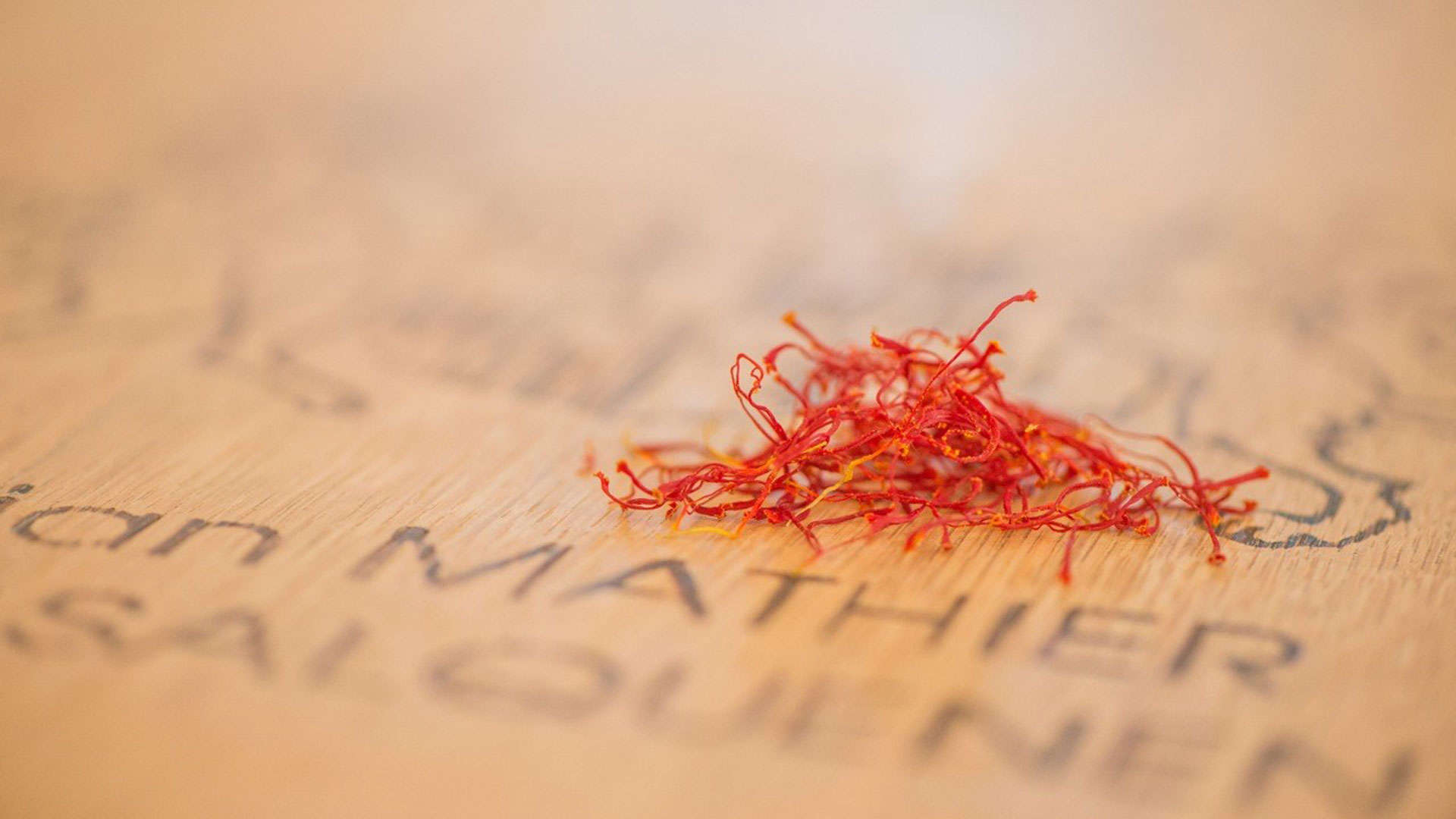Saffron – the red gold from Salgesch
Now available from us. To the online store.
Cleopatra, Egypt’s last female pharaoh, is not only known to have bathed in donkey’s milk for the sake of her beauty. She was also well aware of the aphrodisiac effect of saffron. And so she liked to take a saffron bath before indulging in lustful pleasures. A few thousand years later and no less many kilometers further north, the precious spice even led to highly militant conflicts in the Basel area at the end of the 14th century. These have gone down in history as the infamous “Saffron War”. After the Bishop of Basel, Johann von Vienne, had used the services of Baron Henmann von Bechburg without ever paying him, the deceived man unceremoniously attacked merchants from Basel in 1374 and robbed them of a large quantity of the precious saffron. The recovery of the stolen goods took a whole quarter of a year and ended not only in the successful 14-day siege of the thief’s castle, but also in the beheading of his 16 mercenaries, who had been defending the castle of the robber Baron of Bechburg. He himself had to return the stolen goods and got off with a fine that was horrendous for the time.
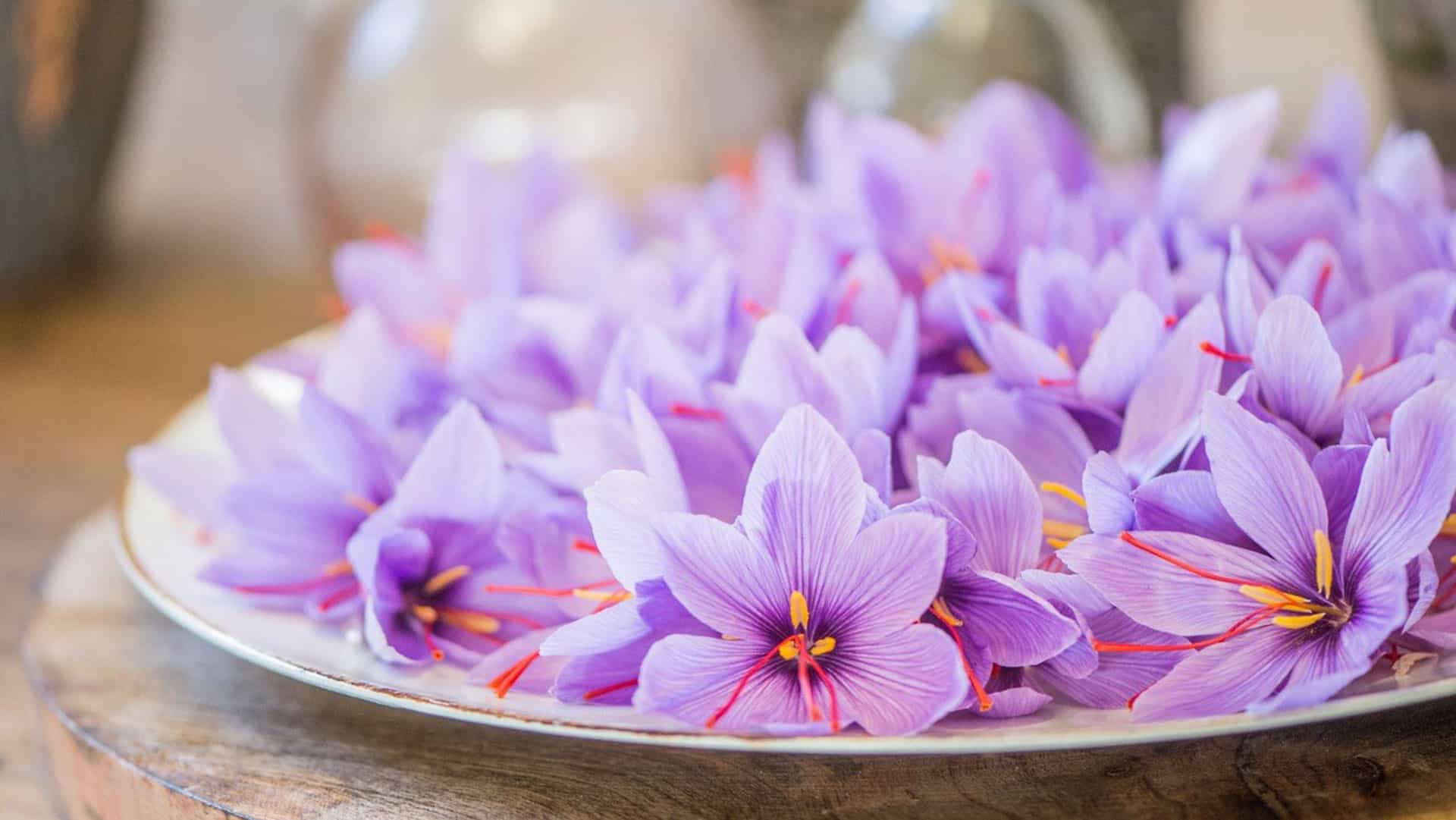
History and origin
The spread and use of saffron can be traced back more than 4000 years in a wide variety of cultures and civilizations. As a precious spice, it was not only used in the kitchen, but also for medicinal purposes and for coloring everyday objects such as fine garments, fabrics and footwear. Even older are the traces that lead us to Iraq. There, archaeologists discovered that the pigments of the typical orange-red color of saffron were used for wall paintings in caves as early as around 48,000 BC.
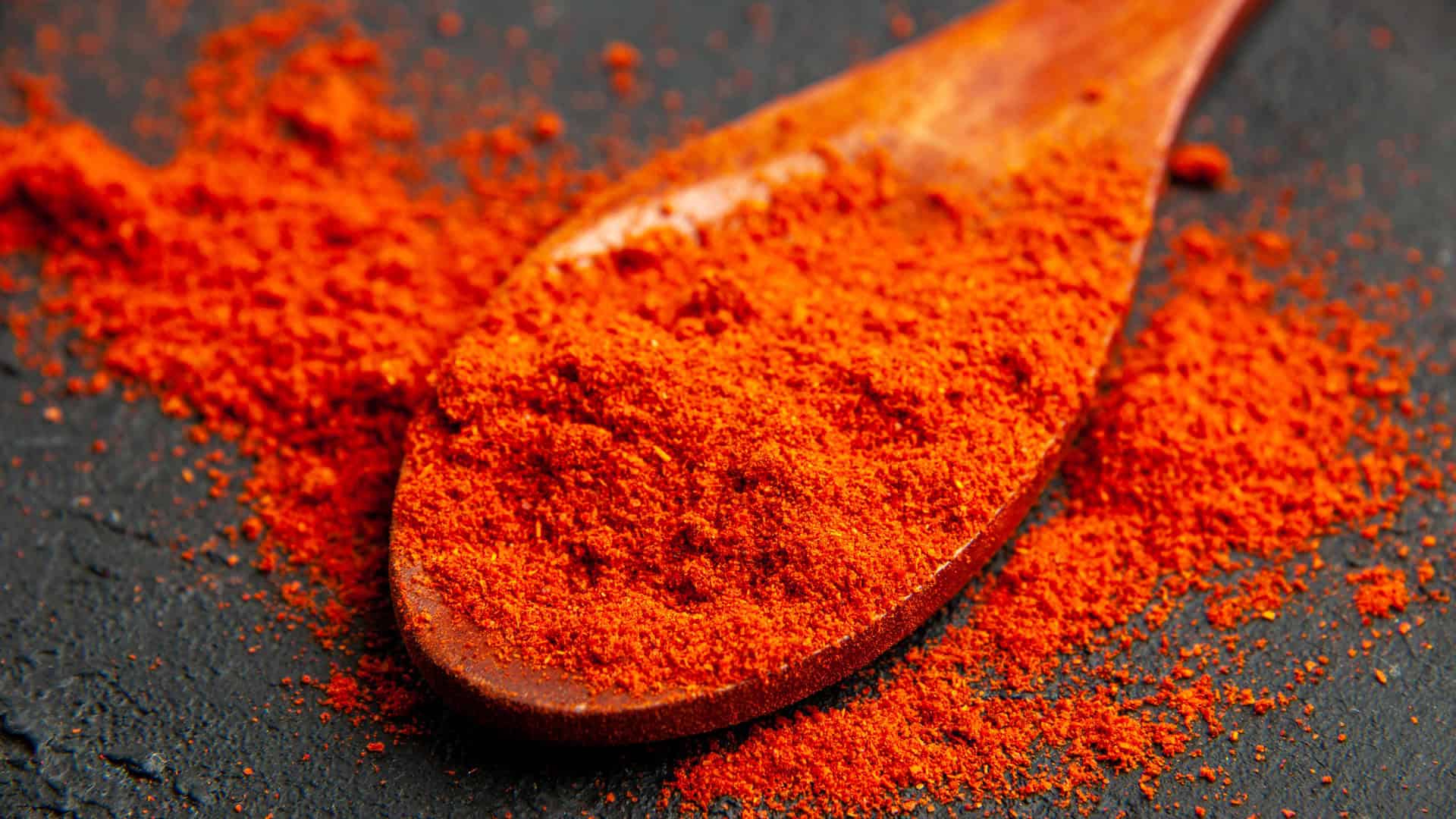
Further proof that saffron enjoys global renown as the world’s most expensive spice is the fact that production facilities are now located in all four corners of the globe. The lion’s share of saffron production, at least 90% (around 170 – 180 tons per year), comes from Iran. The remaining market share is spread across the continents of Australia (Tasmania), Asia (China, Kashmir, Turkey, Afghanistan and Israel), Europe (Switzerland, France, Austria, Germany, Greece, Italy and Spain), Africa (Morocco and Egypt) and South America (Mexico).

Infobox saffron guild mouth
There are various micro-cultivation areas for saffron in Switzerland. In Valais, saffron has been cultivated on the slopes of the pretty mountain village of Mund since the Middle Ages (14th century). Cultivation in Mund was also once endangered and it is mainly thanks to the clerical dignitaries that saffron is still cultivated in Mund today as a tradition. They were the initiators of the Mund Saffron Guild, which was founded more than 40 years ago. The representatives of the saffron guild, which brings together around 100 families, still ensure that saffron is planted, harvested and processed according to centuries-old tradition.
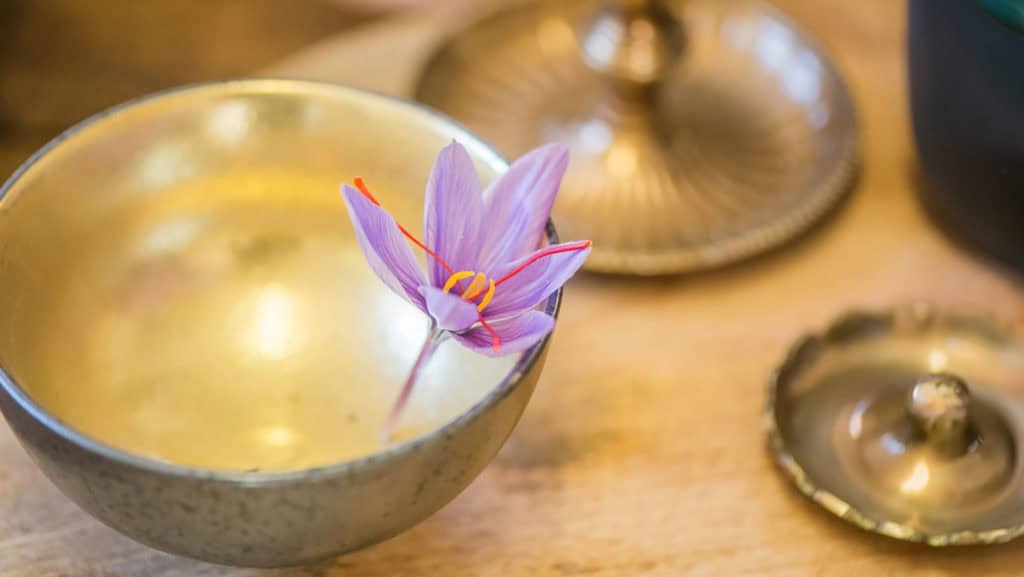
Definition, name
The term saffron (“Crocus sativus”) is borrowed from the Persian vocabulary and comes from the word “Zar-paran”. In Persian, the syllable “Zar” stands for the German word “Gold”. The partial syllable “par” translates as “petals” and thus refers to the origin of the noble spice. In the combined translation, “zar-paran” therefore means “has golden petals”.
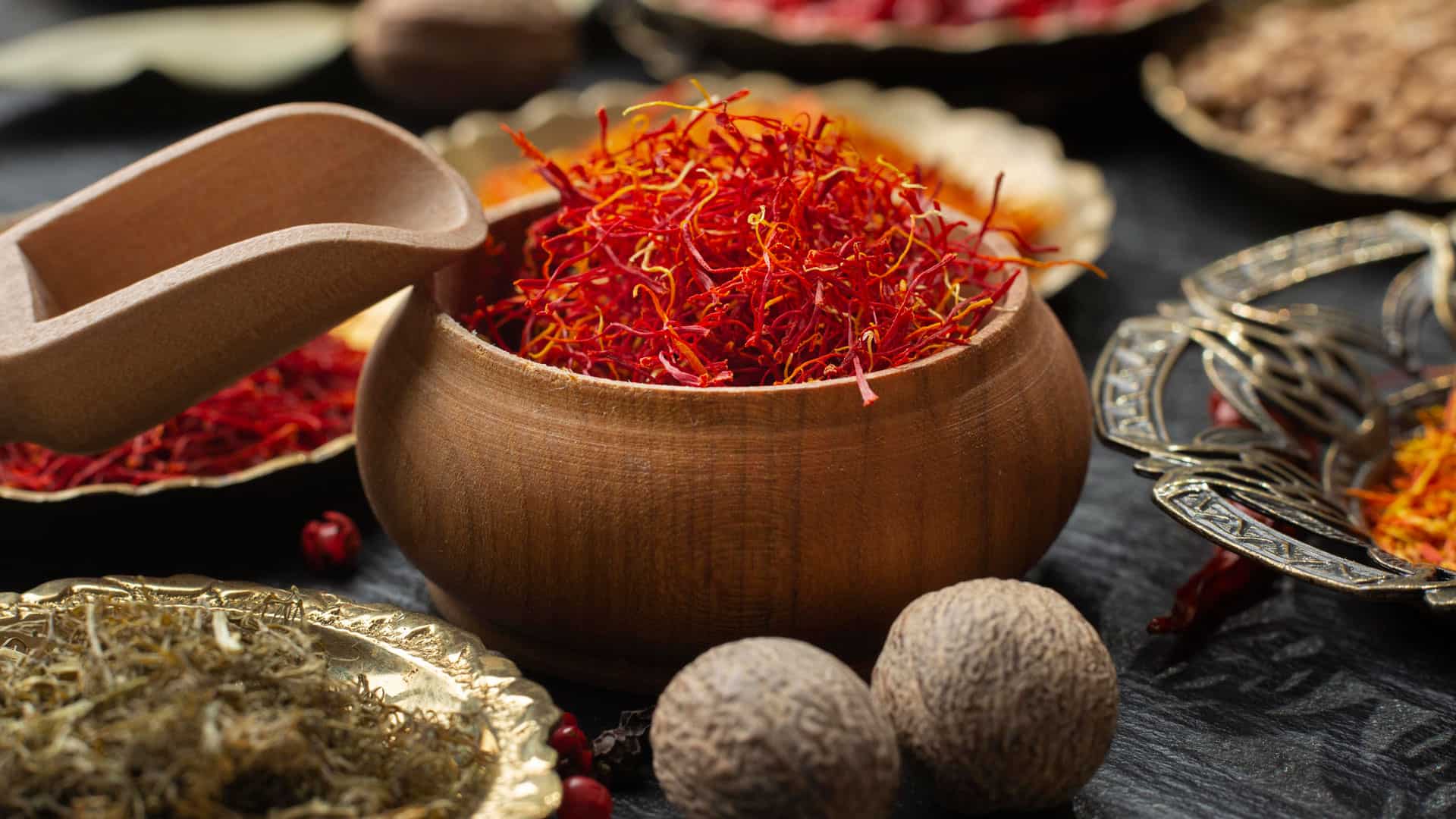
Over the centuries, the Arabic term za’farān was derived from this term, which in turn is very close to the Persian word za’ferân. The latter helped saffron to make the historically determined leap into European usage, as it served as a model for the French word “safran”. From there, it was only a stone’s throw to the Latin “safranum”, which in turn served as a model for the English word “saffron”.
Not least the fact that very similar-sounding words are used for the noble spice in a wide variety of countries on all continents of the world testifies not only to the temporal and spatial spread, but also to the great importance of the spice.
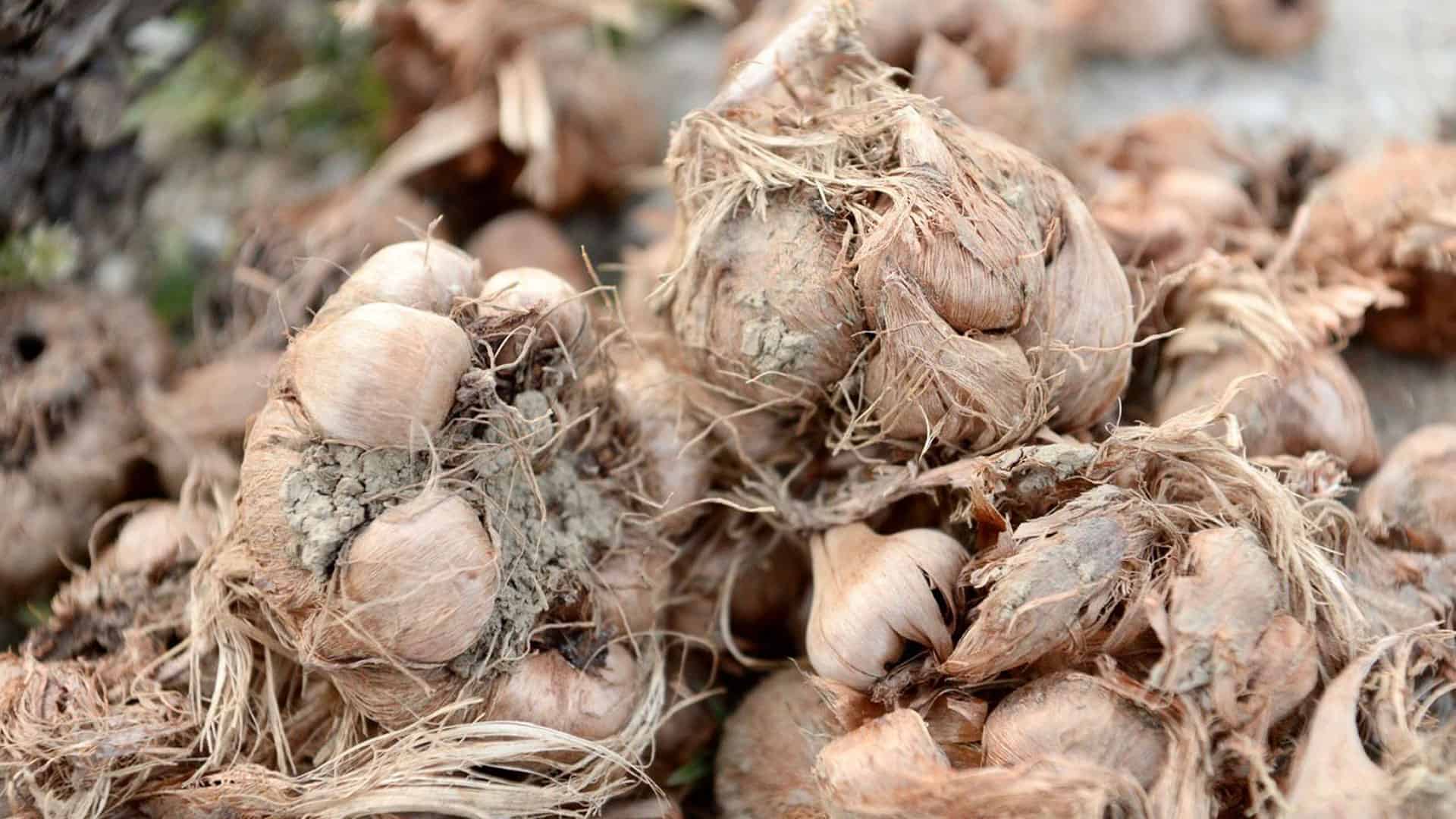
Botany, cultivation and vegetation cycle
Botany
Saffron is the only spice that is extracted from a blossoming flower. It belongs to the iris family (Iridaceae) and blooms for up to five consecutive years. As its outward appearance resembles that of an onion, it is often mistakenly assigned to the onion family. However, saffron is a bulbous plant, which is also triploid and infertile. Reproduction is therefore exclusively vegetative, i.e. through the formation of daughter bulbs. The tubers can produce up to 15 flowers during the flowering period. Enveloped by the six lilac-colored petals is the light yellow pistil, which produces three to six long, red stigma branches at the top of the flower. These later form the spice and give saffron the nickname “red gold”.

Cultivation and vegetation cycle
The saffron plant does not really like it too wet and prefers a moderate microclimate, which is characterized in particular by warmth and dryness. Ideally, the fall should be warm and as free of precipitation as possible. In winter, it can be cool to cold, followed by a hot summer. It should also be very sunny in winter – the saffron bulb particularly likes up to four hours of sunshine, ideally in the afternoon. If the soil is also light, rich in nutrients and provides good drainage, there is virtually nothing to stop the saffron from thriving.
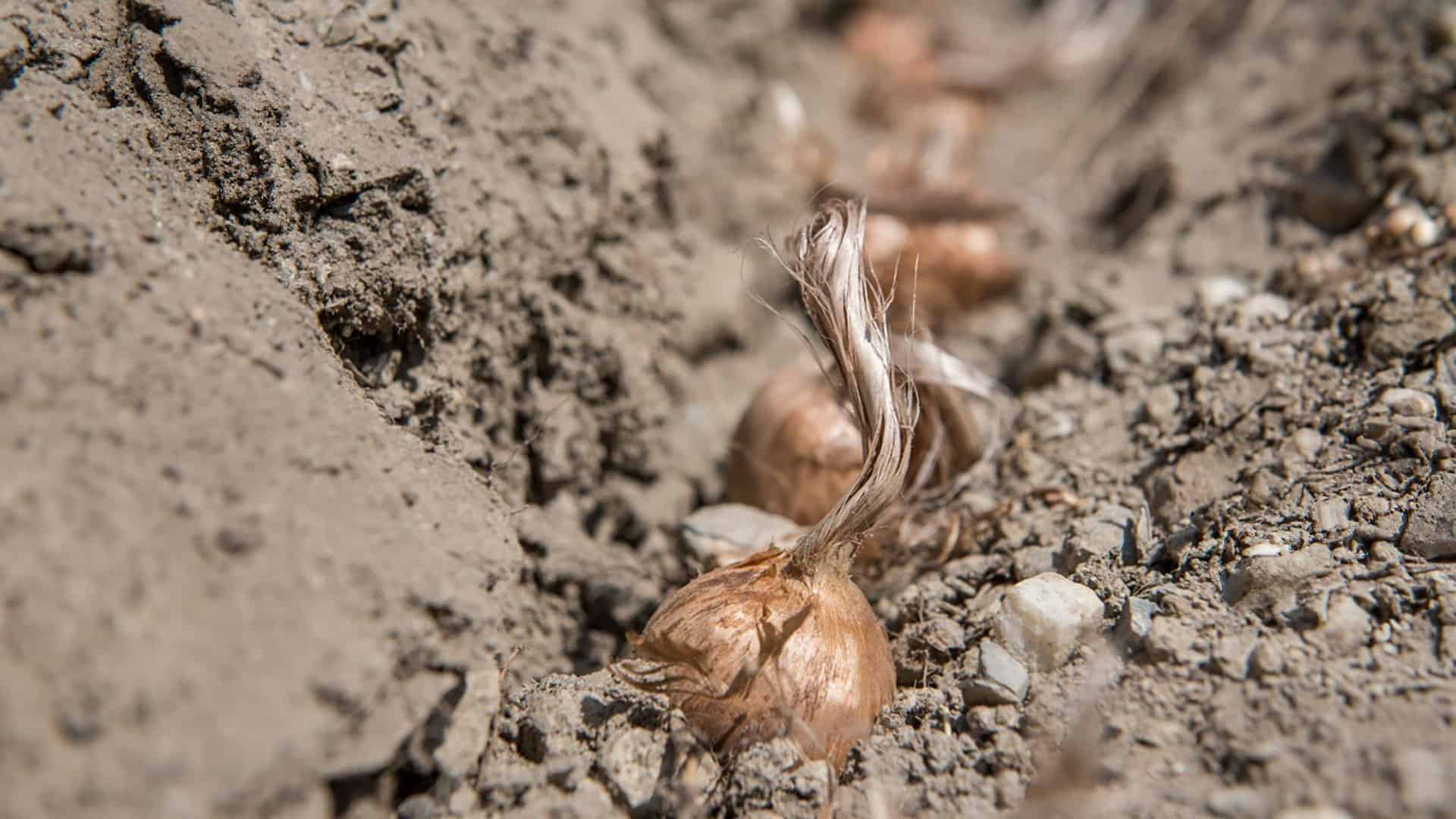
As an anticyclical growth plant, saffron is usually planted in July, takes root in August and then flowers in the fall. Throughout the winter, the plant then forms its typical deep green saffron grass, which is retracted again in late spring (May/June). The plant then goes into “hibernation”.
Harvest
Harvesting takes place in the fall in October/November. It should only be harvested from closed flowers and only very early in the morning. If the temperature rises above 13-14 degrees during the course of the day, the flowers open and the quality of the saffron suffers as a result.
At the beginning of the harvest season, only a few hundred flowers are harvested every day; during the most intensive harvest phase, this can easily be up to 25,000 flowers, depending on the size of the growing area. Planning the harvest is very difficult, as the flowers come out of the ground at night, so that the evening before you don’t know how many will be out the next morning and how many harvesters will be needed. Once they arrive in a warm environment, the flowers open and the saffron threads can be removed.
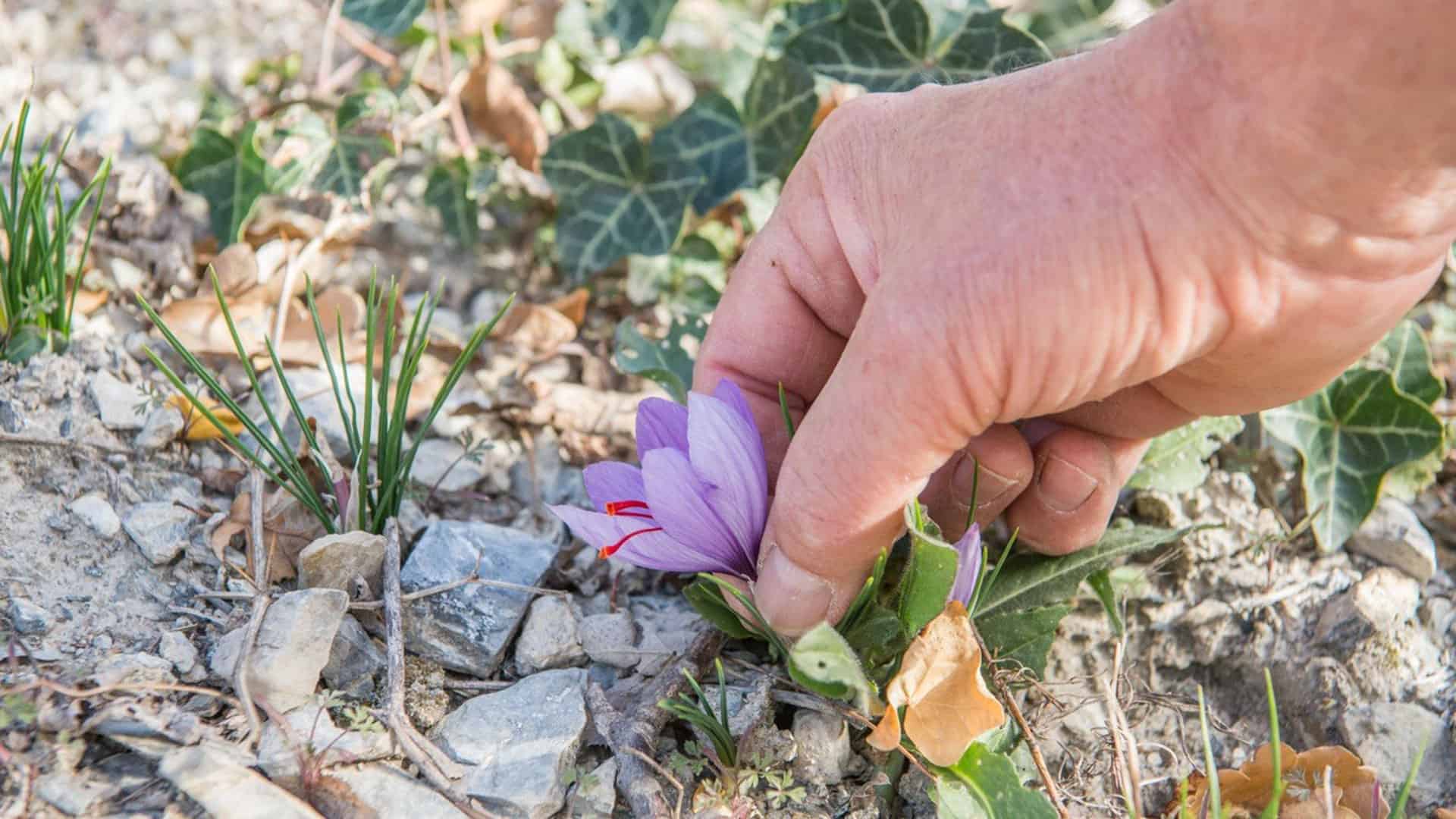
It takes between 150,000 and 200,000 flowers planted over an area of around 10,000 square meters to harvest one kilogram of saffron. As the harvest can only be done by hand, it is extremely laborious. An experienced picker can manage just sixty to eighty grams of flowers per day.
Saffron harvest in Salgesch 2022
Good saffron, and how to spot fake saffron
High-quality saffron
There are a few important criteria for recognizing high-quality saffron:
- The saffron spice should have a bright red color.
- The saffron threads should be straight.
- The saffron should smell flowery, an important indication that the saffron is fresh.
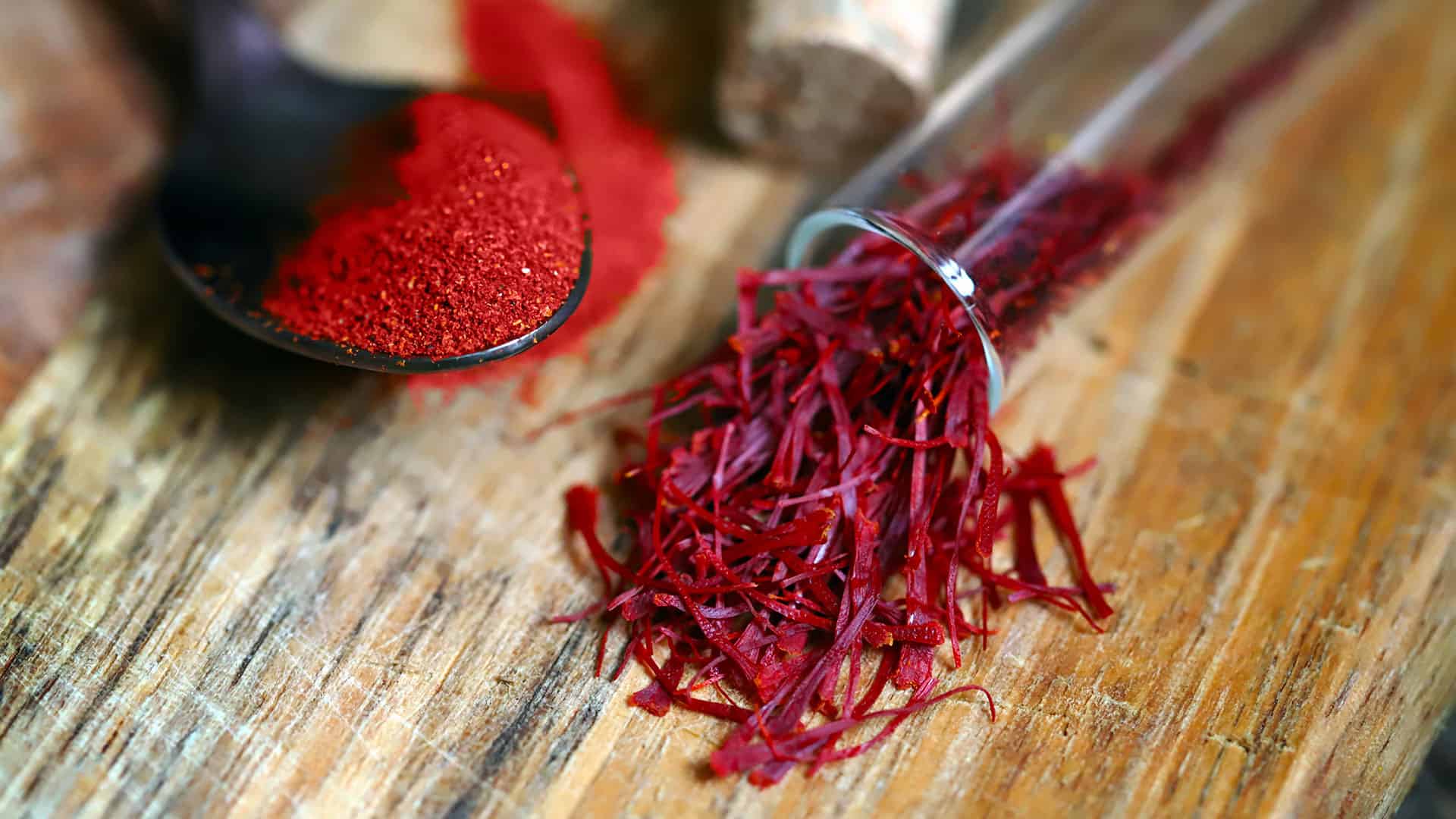
The quality of first-class saffron also depends on three other factors, which must be taken into account during the harvesting and processing stage:
- High-quality saffron can only be harvested when the flower is still closed, i.e. very early in the morning and by 10:00 a.m. at the latest
- The quality of the saffron also depends on how cleanly the stigma branches are removed, as only the red part tastes really good. The yellow transition to the pistil adds weight but is not tasty.
- Last but not least, the optimal drying method is crucial to prevent the threads from becoming moldy. Only then can they be kept in stock for up to two years.
Saffron itself smells sweet, but has a slightly bitter taste. It is characterized by a hay-like scent and slightly metallic notes. There are two ingredients behind the color, smell and taste: the carotenoids, such as crocin, give the spice its intense yellow color, while the safranal provides the typical smell and taste of saffron.
False saffron
Wherever valuable goods are in circulation, counterfeits are also involved. As the most expensive spice in the world, saffron is therefore predestined to be used to trick the inexperienced buyer into buying stretched or counterfeit goods. Turmeric is the preferred choice here. However, it also happens time and again that even the saffron threads are counterfeit. Fortunately, there are some fairly simple tricks you can use to find out whether you are dealing with genuine saffron or a fake:
- If you add baking soda to a mixture of water and saffron, the water should turn yellow if it is real saffron. However, if the mixture turns red to brownish, you have been taken in by an impostor.
- If you mix your saffron product with a little water or milk and the color of the liquid changes immediately, you are dealing with counterfeit saffron.
- If the saffron threads are fake, they lose their color very quickly when immersed in water; original saffron threads retain their red hue.
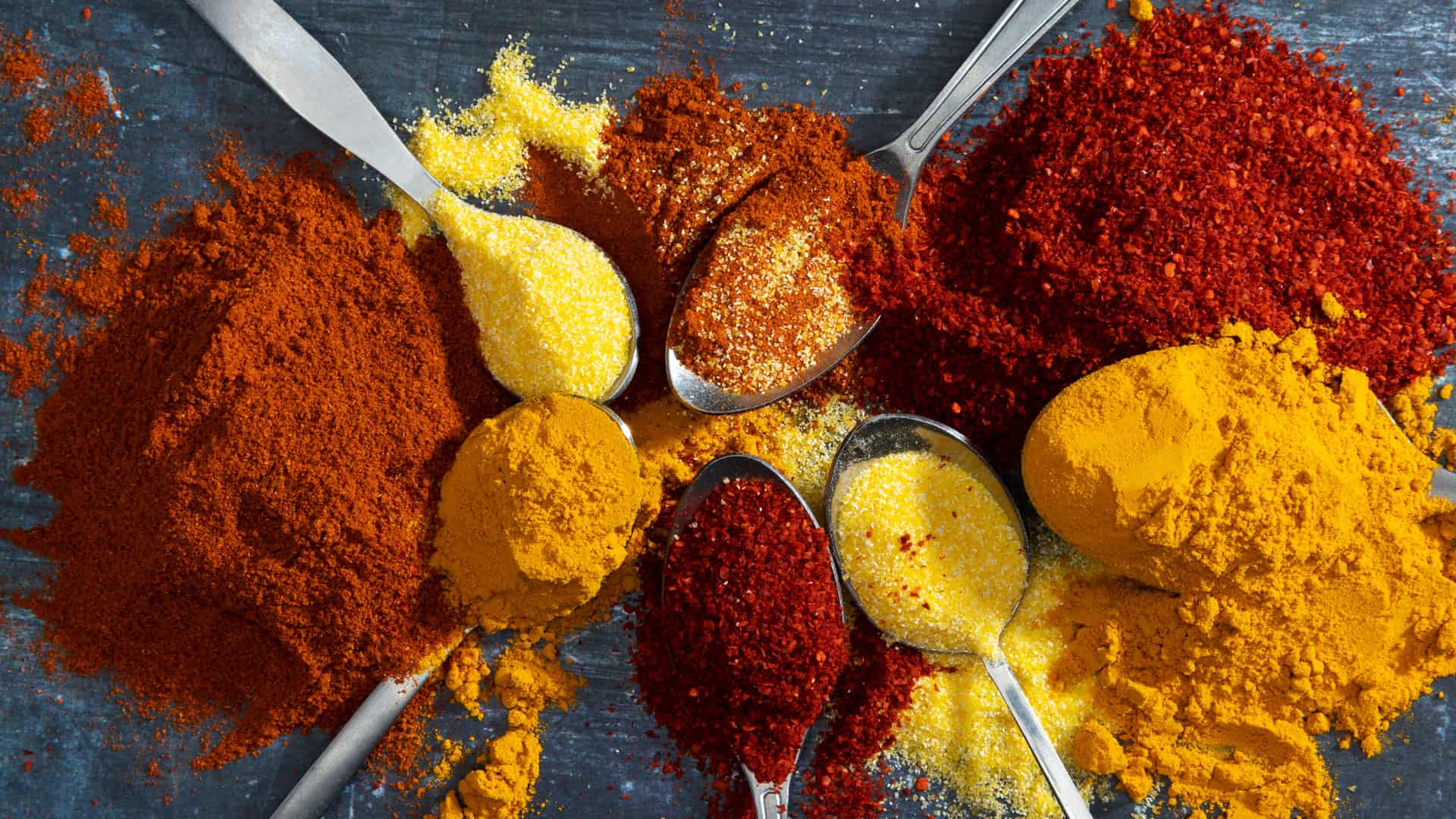
Saffron cultivation in Salgesch: where liquid meets red gold
The climatic conditions in the Rhone Valley are not only favorable for winegrowing in Valais. Saffron also feels very much at home here, and so the owner of Blumen Gschwend had the idea, during a visit to the picturesque wine village of Salgesch, to concoct a plan with Diego Mathier, the best Swiss winegrower of the decade, which is otherwise only practiced in Thurgau in Switzerland. We are talking about growing saffron in the vineyards – a real win-win-win project. Not only are the geological and climatic conditions ideal for growing the world’s most expensive spice. Thanks to saffron’s characteristic as an anti-cyclical growth plant, the sustainable cultivation of one and the same area is carried out completely independently of each other by two different trades. During the dead period of the vines after the harvest in September, Viktor Gschwend and his team come to the Salgesch winegrower’s vineyards to harvest the precious threads of saffron. And during the time when the saffron is in decline as a plant, Diego Mathier and his team carry out the necessary work in the vineyards to ensure that an excellent vintage can be produced again. In addition, planting the vineyard with saffron tubers also helps to prevent erosion and promotes organic farming, as the vineyard is weeded exclusively by hand.
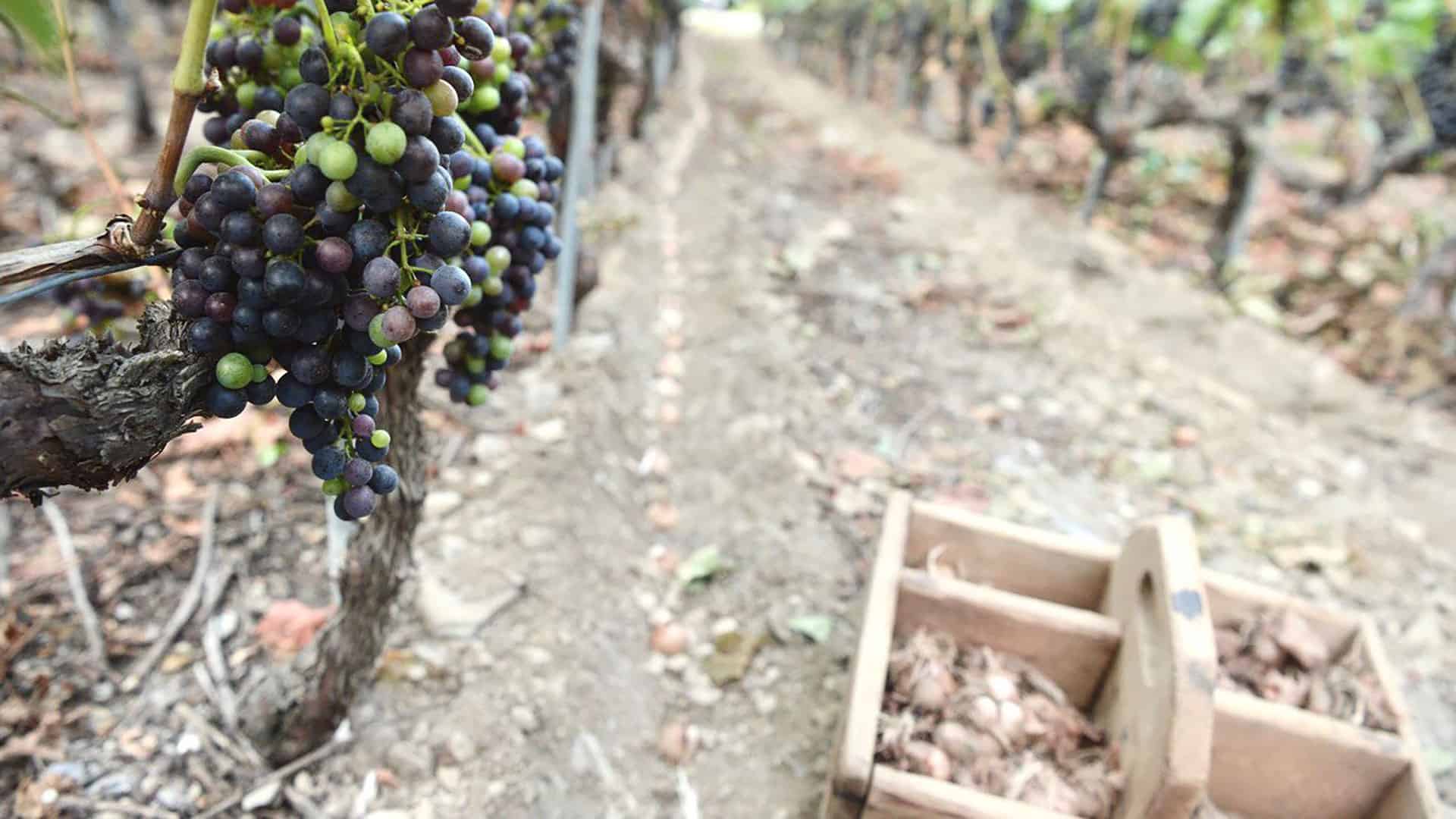
The right plot was quickly found. Located just 300 meters from the winery of the three-time Swiss winemaker of 2018, 2011 and 2007, no fewer than 25,000 saffron bulbs are planted on the “Alte Sage” plot. This is a plot of vines that was brought into the marriage by the future wife, Mathier Marie, née Pichel, of Diego Mathier’s great-grandfather, Mathier Ferdinand. The plot is planted with traditional Gamay-Chardonnay grapes; the plot is fully west-facing and therefore ideal for growing saffron, which needs the intense Valais afternoon sun to grow, especially in winter.
An ideal place, therefore, where the liquid gold of the best Swiss winemaker of the decade enters into a perfect marriage with the red gold of saffron producer Viktor Gschwend. And not least because both products come together at the dining table or in the restaurant to create a new firework of flavors once they have fully matured: as an outstanding Mathier wine from Cave Mathier and as a delicate spice in the dishes prepared.
Economic importance, storage, use and side effects of saffron
Economic importance of saffron
Even today, saffron is still a luxury product of outstanding economic importance. This is also reflected in the fact that in the producing countries, sowing, cultivation, harvesting and further processing are still carried out exclusively by hand at great expense. This explains why saffron is the most expensive spice in the world, not least because of the very low harvest volumes. One kilo is traded on the world market at a price of CHF 60,000 – CHF 80,000 (depending on quality and origin). If you are now interested in growing saffron, we would like to point out that professional cultivation only really pays off after five years. Both your passion and your finances should be equipped with plenty of stamina and enthusiasm.
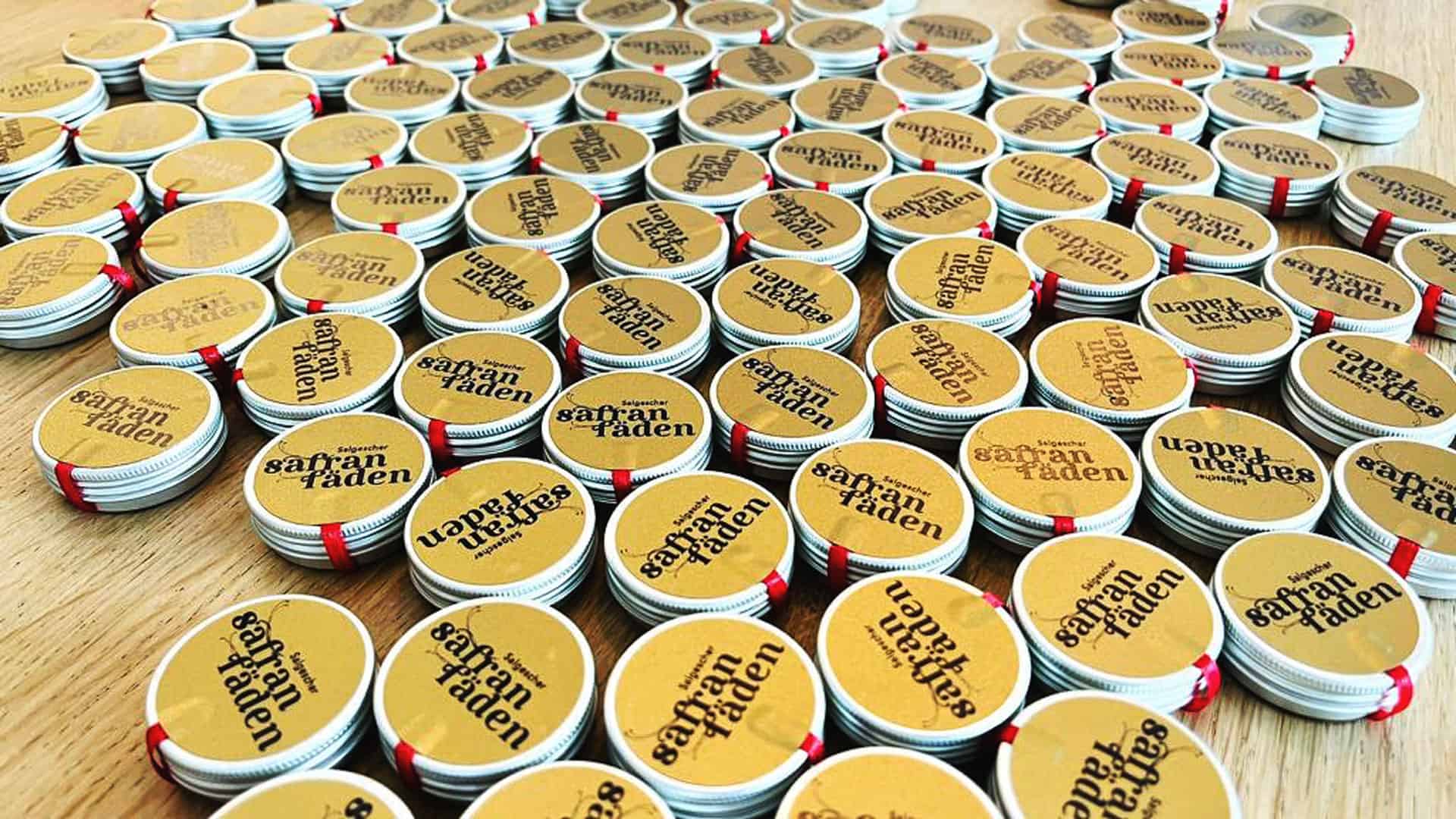
The correct storage of saffron
Given the immeasurable value of saffron, it goes without saying that it should be handled with care and stored under the best possible conditions. Basically, the same applies here as for wine. Saffron is like wine and needs maturing, because freshly dried saffron has hardly any flavor of its own.
Once the saffron has been dried, you should store it for at least three months before using it in the kitchen. We recommend that you give your saffron a good quarter of a year to develop its typical aroma. Otherwise, you risk blowing your money in the kitchen. Particularly important: store the saffron in a dark, airtight container. Otherwise you run the risk of it absorbing moisture and losing its aroma.
The use of saffron
Saffron in the kitchen
The good news first: you don’t have to be a top chef, because cooking with saffron is basically very simple. However, whether simple or top cuisine – the same applies to saffron:
Less is more, as we all know. We recommend this not only to save you money, but also for reasons of taste. Saffron has a very intense flavor of its own and can easily overpower other ingredients if used in excessive quantities. Careful dosing is therefore called for.
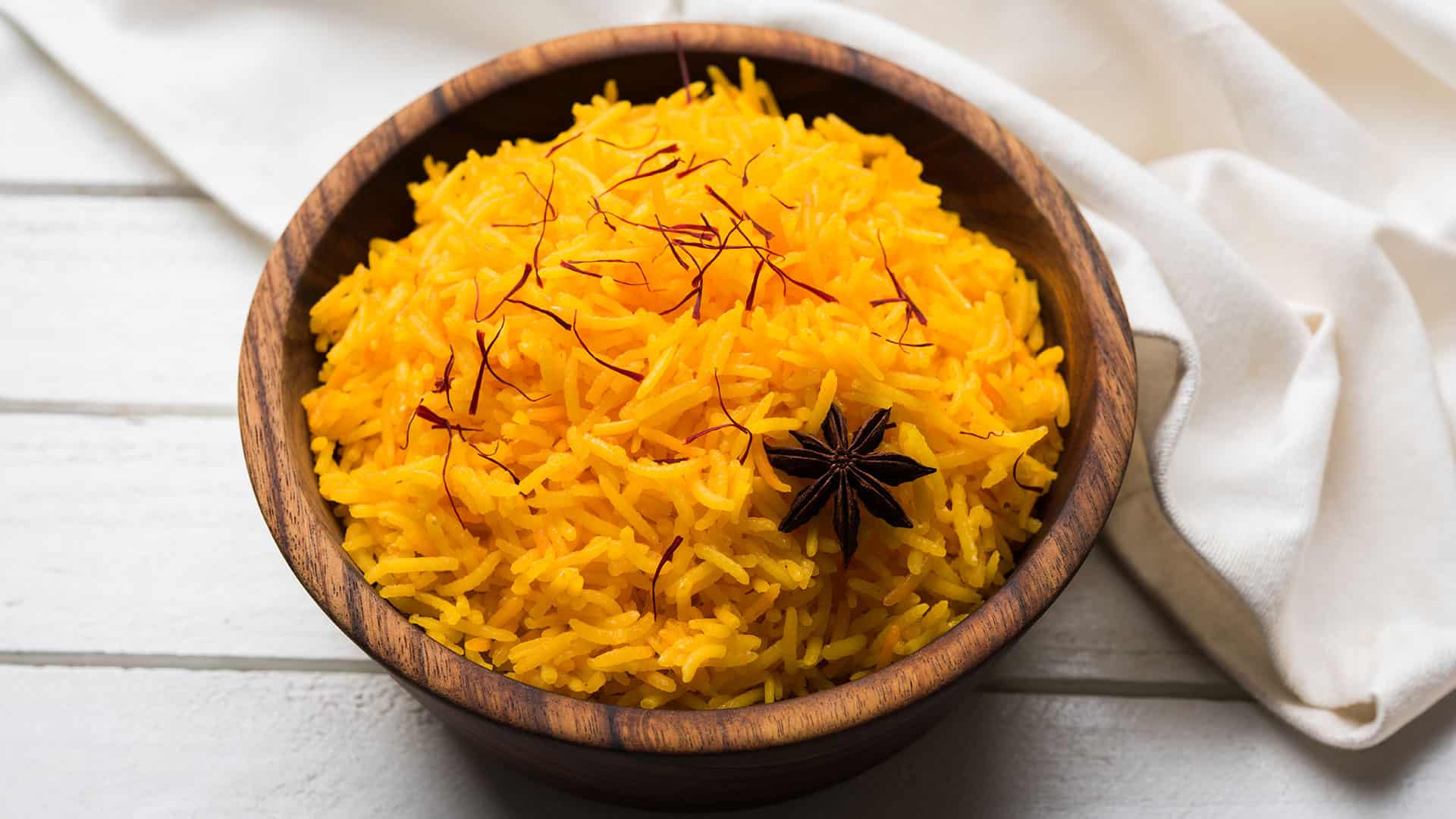
However, in order for it to develop its full effect, it is advisable to grind the saffron fresh (alternatively, you can also grind it between your fingers, although your fingers will then also become intensely colored).
The saffron should then be soaked in lukewarm fresh water for a good half hour before cooking and only used afterwards. It can also be combined very well with grape seed oil and enhances suitable dishes with a slightly creamy sauce in the most excellent way.
Tip: If you are planning dishes for the coming Christmas season in which saffron plays a role as an ingredient, you should only use saffron from the previous year, as the saffron from the current year is still too fresh and has not yet fully developed its aroma.
Saffron as a medicinal plant
In medicine, saffron is not only known for its mood-enhancing properties, but also for its highly aphrodisiac effect and can also be used as an excellent anti-stress agent. Recent studies have shown that the safranal it contains increases serotonin levels comparable to synthetically produced drugs, but without any undesirable side effects.
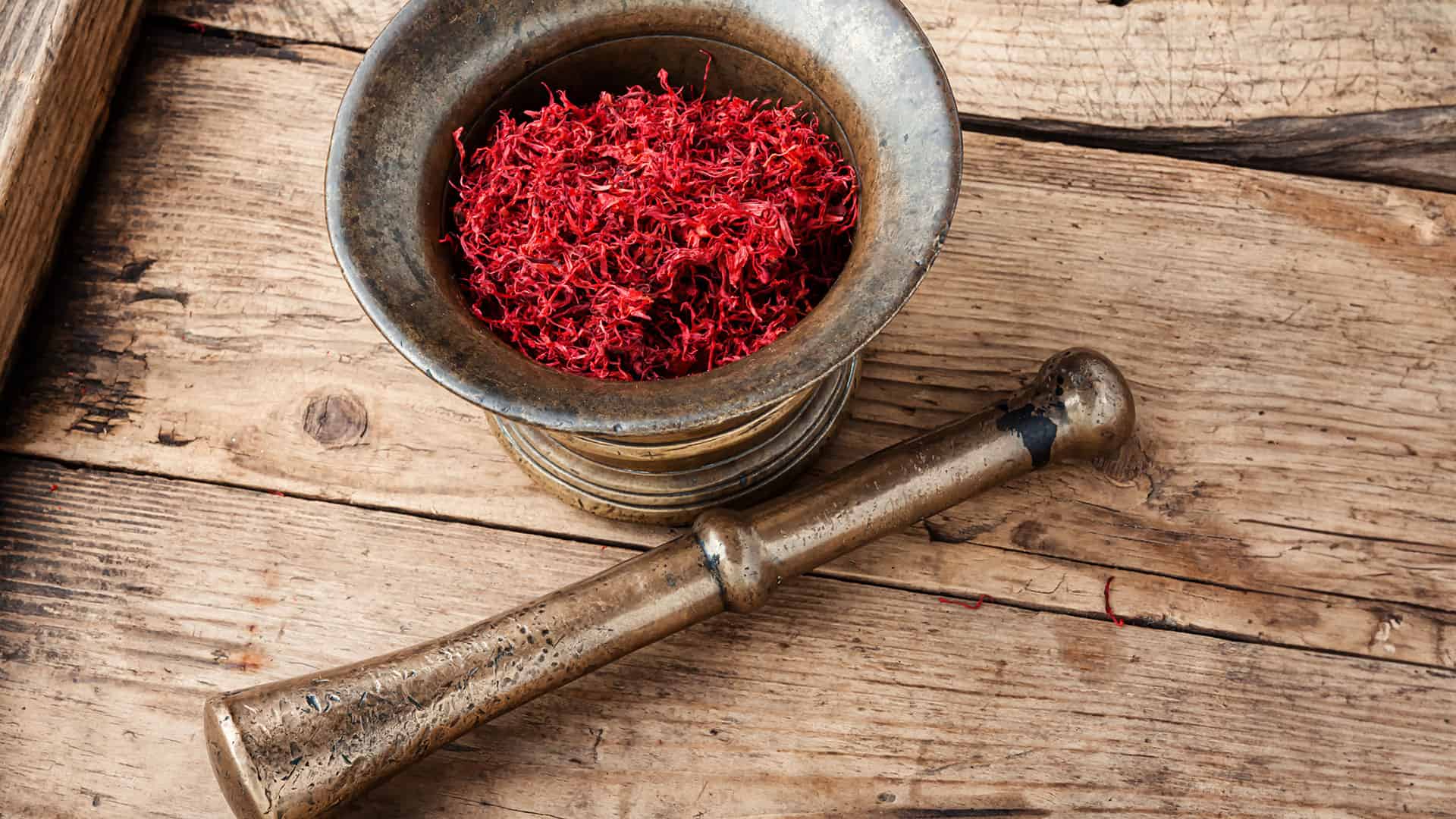
Popularly known as the spice of joy, saffron can be used to treat highly depressive moods or PMS and also contains antioxidant substances that have an anti-inflammatory and anti-cancer effect. Another reason why Cleopatra may have been so fond of saffron could be that it is said to have an appetite-suppressing effect…
Side effects of saffron
As is so often the case in life, saffron is one of those luxury foods that should not be consumed in large quantities. The reason for this is not so much that you might be putting too much strain on your wallet as on your health, as the spice is highly toxic per se. Just 20 grams can kill a person (given the price you have to pay for saffron on the market, this is of course highly unlikely). If you ingest more than 5 grams of saffron at a time, symptoms such as colic, spontaneous bleeding of the skin and mucous membranes, dizziness or stomach upset will occur. However, the risk is negligible, as commercial saffron packages generally contain a maximum of 0.125 grams.
Saffron & wine
Basics about saffron and winepairing
Of course, the basic principle is: there is nothing that does not exist. And at the end of the day, it’s your taste that counts. To ensure that you enjoy the combination of saffron and wine and that you can really discover the dish prepared with saffron to the full, you should follow a few simple rules:
- Saffron & white wine: Always use dry white wines. For example, a dry white wine with a slight bitterness is recommended for a saffron risotto. A fine Petite Arvine, such as our Petite Arvine Les Pyramides, is also suitable for dishes with saffron sauces.
- Saffron & red wine: Tannic heavyweights have no place with this fine spice. Instead, the rounder, softer, more balanced and smoother, the better (for you and for the saffron). For example, the Merlot Nadia Mathier.
We will be happy to provide you with suitable recipes for dishes with saffron and wine recommendations from our house and wish you incomparable moments of pleasure.
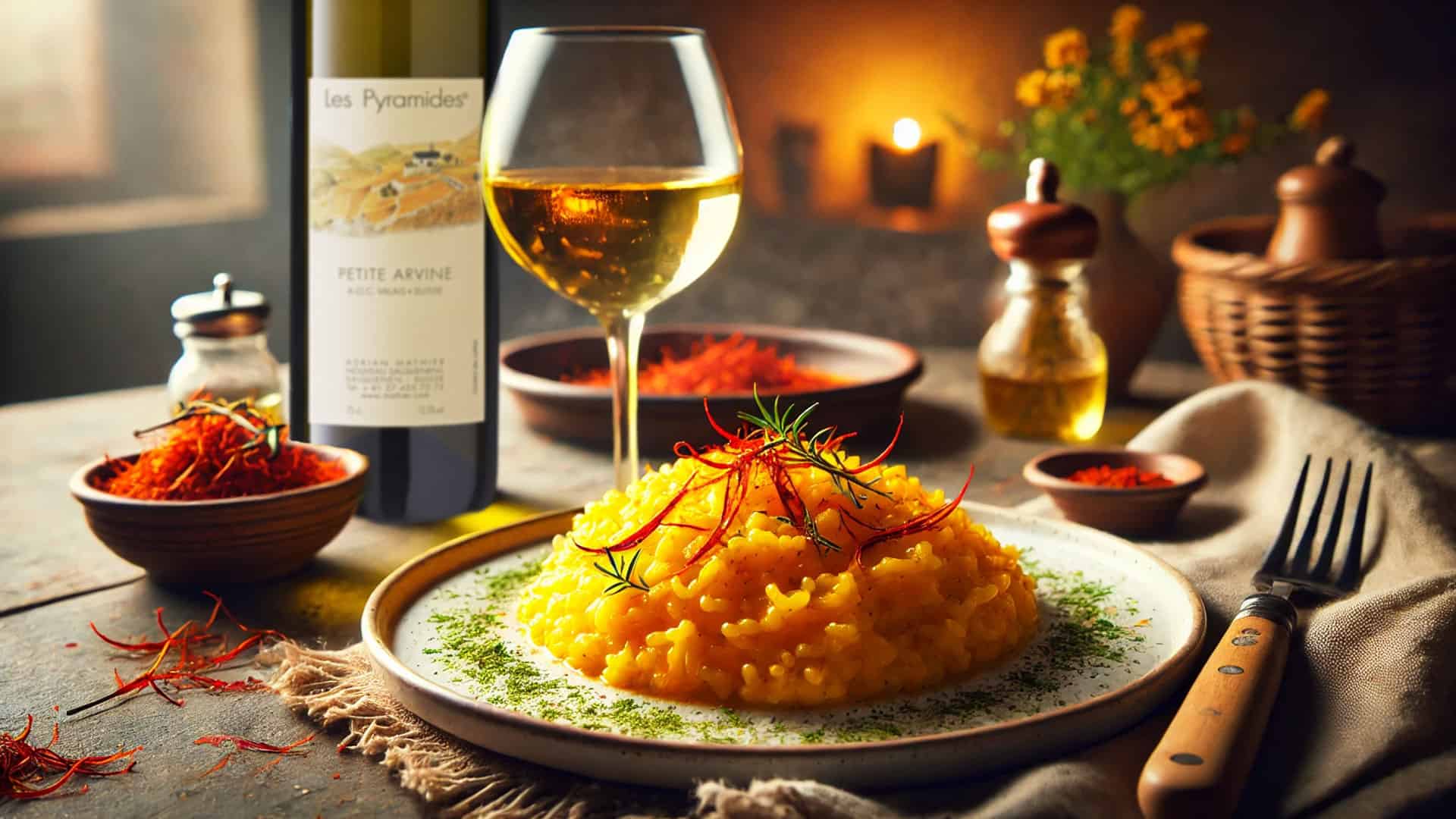
Nadia’s saffron recipes with wine recommendation
- Saffron risotto with Petite Arvine Les Pyramides AOC Valais
- Halibut in saffron and fennel broth with Ambassadeur Fumé Gros Rhin de Chamoson AOC Valais
- Meatballs with saffron sauce and zucchini couscous with Merlot Nadia Mathier AOC Valais
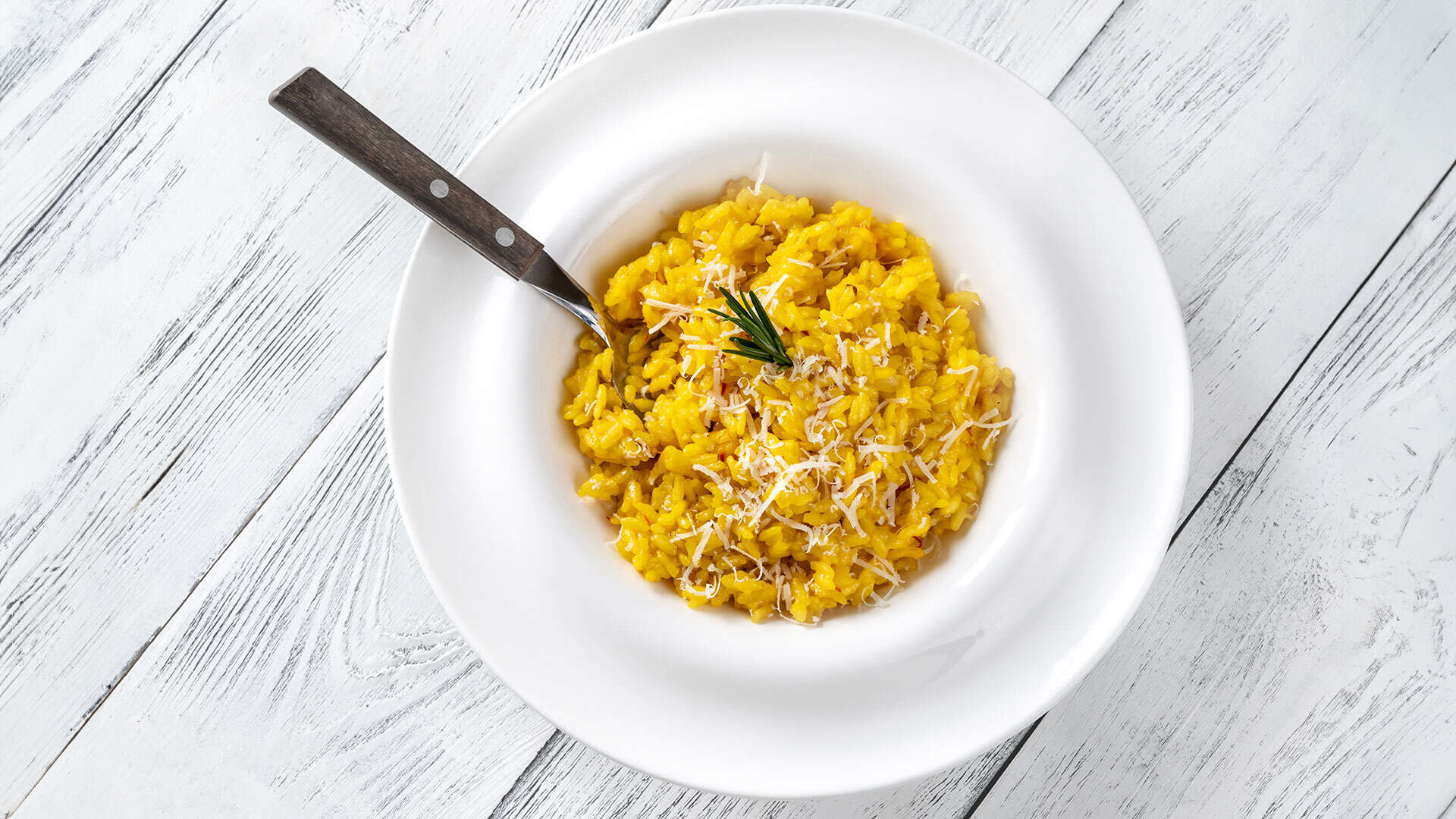
Download the recipes
FAQ:
How many flowers does it take to make 1 kg of saffron?
For one kilogram of saffron, 150,000 to 200,000 flowers have to be harvested.
Why is saffron so expensive?
Due to the extremely low yield per flower and the time-consuming harvesting and processing, saffron is very expensive.
What do I use saffron for?
Saffron can be used both in the kitchen and as a medicinal plant. In both cases, a sparing dosage is recommended, as saffron has a very strong taste of its own and can cause serious damage to health if consumed in excessive quantities (as little as 5 g).
What is saffron good for?
Saffron refines dishes in both simple and high-end gastronomy. Widely used dishes include saffron risotto, piccata mlianese with saffron sauce and saffron desserts. As a medicinal plant, saffron has a highly mood-lifting, i.e. antidepressant effect and has anti-inflammatory and anti-cancer properties thanks to its oxidative ingredients.
How do I use saffron correctly in the kitchen?
Thanks to its intense flavor, saffron should only ever be used in very small doses. It is best to grind the saffron fresh and soak it in slightly sweetened, cold water 24 hours before use.
When does saffron bloom in Salgesch?
The saffron in Salgesch blooms for a few weeks in October/November. It not only tastes delicious but also enchants the eyes when it bathes the autumnal vineyards in its typical purple.
How much does Swiss saffron cost?
The price of a kilogram of Swiss saffron is between CHF 60,000 and CHF 80,000.
Where is saffron grown in Switzerland?
Saffron is once again being cultivated in various places in Switzerland, including Gschwend Blumen in Thurgau. In Valais, it was first cultivated by the Mund saffron guild on the mountain slopes not far from the pretty mountain village of Mund. This was followed by other cultivation sites in Lower Valais and, more recently, the red gold is now also being grown in vineyards in Salgesch in a joint project between Gschwend Blumen and the best Swiss winter of the decade, Diego Mathier.
Does saffron have a healing effect?
Yes, saffron is considered a medicinal plant and has a mood-enhancing, anti-inflammatory and anti-cancer effect and can also be enjoyed, for example, for PMS or simply as a health-promoting tea.

